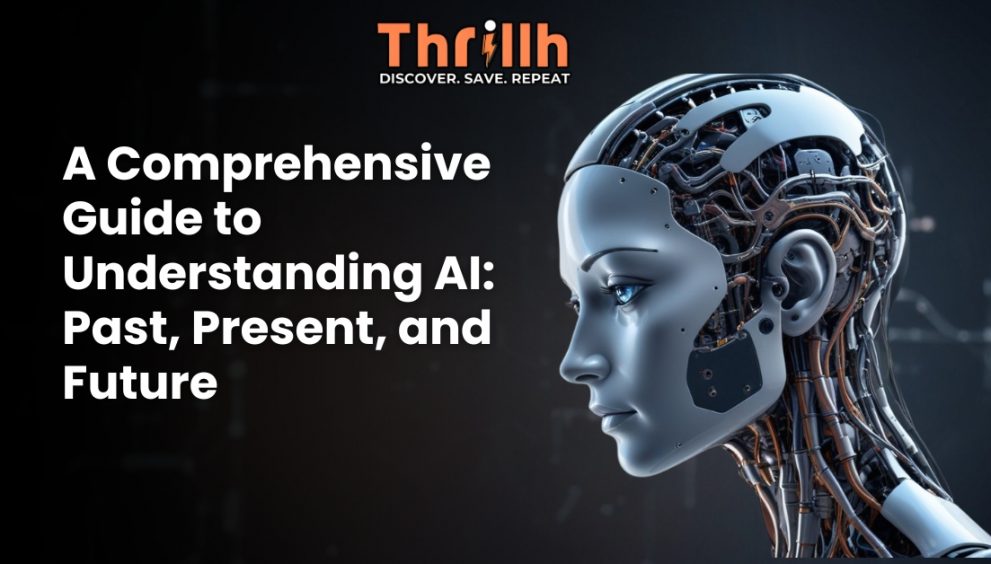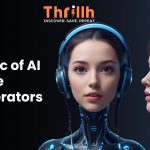Introduction to Artificial Intelligence
What is Artificial Intelligence?
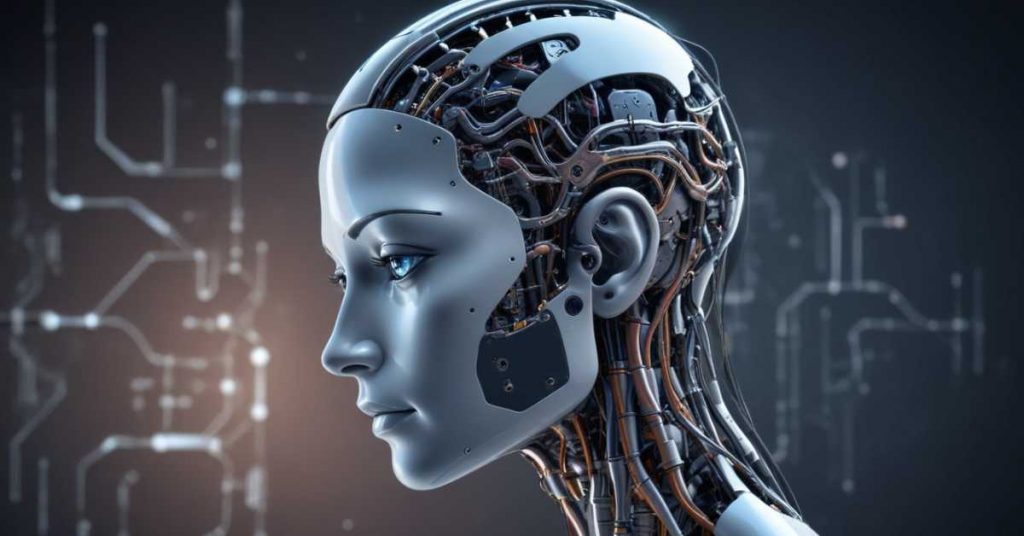
Artificial Intelligence, often called AI, is the science of making computers smart. Imagine if your computer or a robot could think and learn just like you do! AI is all about creating machines that can solve problems, understand language, recognize images, and even make decisions.
Think about your favorite video game. AI is what makes the characters in the game smart enough to react to your moves. Or consider Siri on your iPhone or Alexa at home – they use AI to understand what you say and give you answers or perform tasks like playing music or setting reminders.
Importance and Impact of AI
AI is super important and has a big impact on our lives. Here’s why:
- Helps in Healthcare: AI helps doctors to diagnose diseases quickly and accurately. For example, AI can look at X-ray images and spot health problems that a human might miss. This helps doctors treat patients faster and better.
- Makes Life Easier: Have you ever used Google Maps to find the quickest way to your friend’s house? AI helps by analyzing traffic data and finding the best route. It also helps when you use voice assistants like Siri or Alexa, which can answer questions, set alarms, and even control smart devices in your home.
- Enhances Education: AI can help teachers by providing personalized learning for students. Imagine having a tutor who knows exactly what you need to study and helps you learn in a way that’s best for you.
- Improves Safety: AI is used in self-driving cars to help them understand the road and drive safely. This can reduce accidents and make travel safer for everyone.
- Boosts Entertainment: When you watch Netflix or YouTube, AI suggests shows and videos you might like based on what you’ve watched before. This makes it easier to find new things you’ll enjoy.
References
- Google Maps: AI in Google Maps helps in predicting traffic and suggesting the best routes. Learn more at Google Maps Blog.
- Healthcare AI: AI in healthcare is used to diagnose diseases and recommend treatments. Read more at Harvard Business Review.
- Education AI: AI in education helps personalize learning experiences for students. Find out more at WeForum.
- Self-driving Cars: AI helps in making self-driving cars safe and efficient. Explore more at Tesla.
By understanding and using AI, we can make our world smarter and more efficient. AI is not just a thing of the future – it’s already here, making our lives better every day.
How Did AI Start?
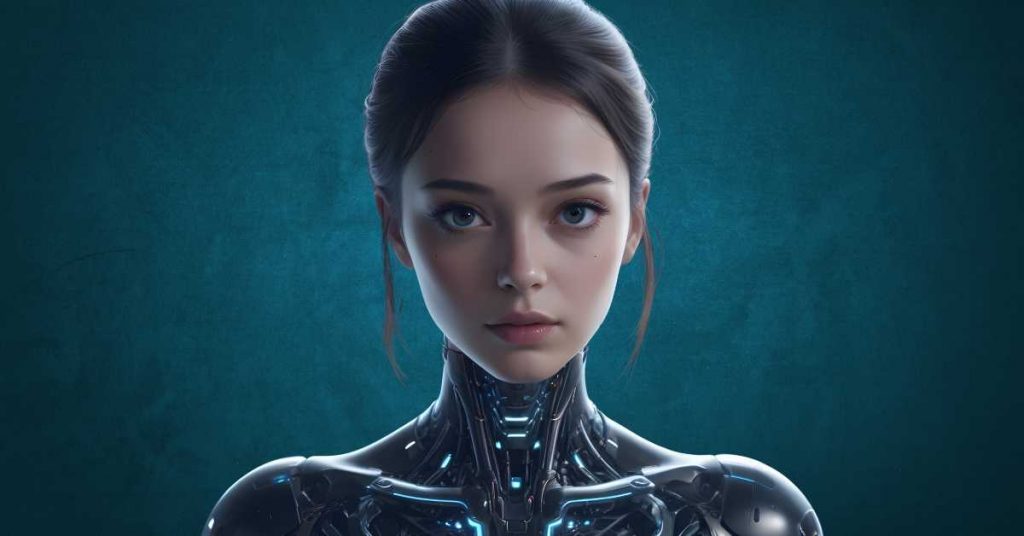
Early Concepts and Theories
AI, or Artificial Intelligence, didn’t just appear out of nowhere. It all started with some really smart people who had big ideas about making machines think like humans. Here’s a simple story of how it began.
- Ancient Ideas: Even in ancient times, people dreamed about making machines that could think and work like humans. For example, the ancient Greeks had myths about robots and artificial beings, like Talos, a giant bronze man who protected the island of Crete.
- Mathematical Logic: In the 1800s, a man named George Boole came up with a system of logic that laid the groundwork for computer science. This system, called Boolean logic, is still used in computers today to make decisions based on yes/no questions.
- The Turing Test: Fast forward to the 1950s, a British mathematician named Alan Turing asked, “Can machines think?” He proposed a test, now called the Turing Test, where a machine would be considered intelligent if it could have a conversation with a human without the human realizing they were talking to a machine.
Key Figures in AI Development
Several brilliant minds have contributed to the development of AI. Let’s meet some of the key figures:
- Alan Turing:
- Who was he? Alan Turing was a British mathematician and logician. He is often called the father of computer science.
- What did he do? Turing created the Turing Test and laid the groundwork for modern computers. He also developed early concepts of algorithms and computation.
- John McCarthy:
- Who was he? John McCarthy was an American computer scientist.
- What did he do? In 1956, McCarthy coined the term “Artificial Intelligence” and organized the first AI conference at Dartmouth College. This event is often considered the birth of AI as a field of study.
- Marvin Minsky:
- Who was he? Marvin Minsky was an American cognitive scientist and co-founder of the MIT Media Lab.
- What did he do? Minsky made significant contributions to AI, particularly in the areas of neural networks and robotics. He also wrote several important books on AI.
- Herbert A. Simon:
- Who was he? Herbert Simon was an American economist, political scientist, and cognitive psychologist.
- What did he do? Simon was one of the first to explore the concept of machine learning. He also helped develop the first AI programs that could solve problems and play games like chess.
- Geoffrey Hinton:
- Who is he? Geoffrey Hinton is a British-Canadian cognitive psychologist and computer scientist.
- What did he do? Hinton is known for his work on artificial neural networks and deep learning. His research has significantly advanced the field of AI, particularly in image and speech recognition.
References
- Alan Turing and the Turing Test: Learn more about Alan Turing and his contributions at The Turing Archive.
- John McCarthy and the Dartmouth Conferences: Read about John McCarthy’s work at Stanford AI Lab.
- Marvin Minsky’s Contributions: Discover Marvin Minsky’s impact on AI at MIT Media Lab.
- Herbert A. Simon’s Work: Explore Herbert Simon’s research at Carnegie Mellon University.
- Geoffrey Hinton’s Research: Find out more about Geoffrey Hinton’s work at the University of Toronto.
By understanding these early concepts and the work of key figures, we can appreciate how AI started and how it has grown into the powerful technology it is today.
History of AI
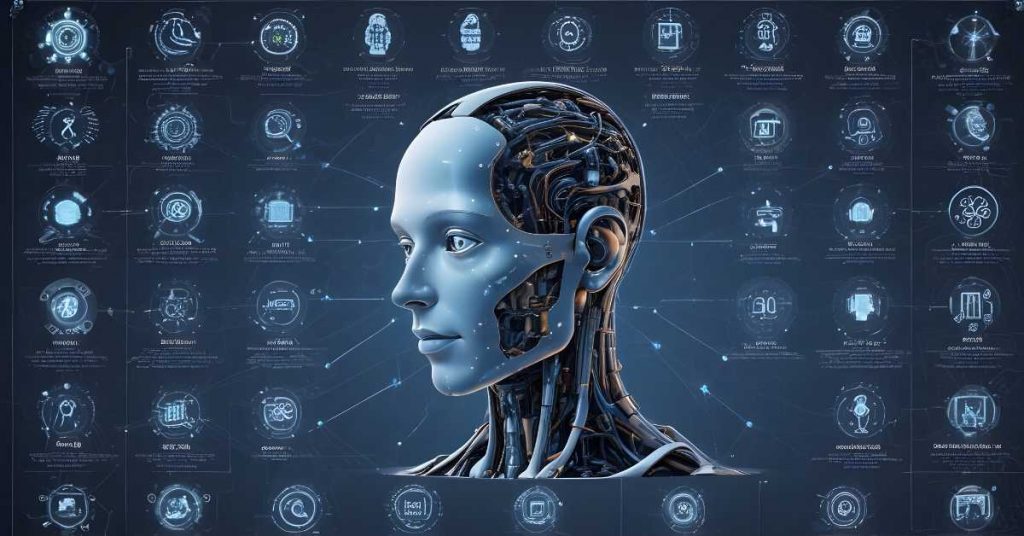
The Beginnings (1950s)
Imagine if you had a toy that could think and learn just like you! In the 1950s, scientists started dreaming about creating machines that could do just that. One of the most important people in this story is Alan Turing. He came up with the idea that if a machine could chat with a human and the human couldn’t tell it was a machine, then the machine could be considered intelligent. This idea is called the Turing Test.
In 1956, a group of scientists had a big meeting at Dartmouth College. They talked about creating machines that could think and learn like humans. This meeting is considered the birth of artificial intelligence, or AI. They believed that computers could be programmed to solve problems and think logically.
Growth and Development (1960s-1980s)
During the 1960s, AI started to grow. Scientists built programs that could play games like chess and solve math problems. They also created machines that could understand simple language and even see and recognize shapes. However, these machines were very simple compared to today’s computers.
In the 1970s and 1980s, AI research continued to develop. Scientists made robots that could move around and interact with their environment. They also started working on “expert systems,” which are computer programs that can make decisions in specific areas, like diagnosing illnesses or fixing broken machines.
The AI Winter and Revival (1990s-2000s)
Imagine if your favorite toy stopped working because it was too hard to fix. Something like this happened to AI. In the late 1980s and early 1990s, people became frustrated because AI wasn’t as smart as they hoped. Funding and interest in AI research decreased, and this period is known as the AI Winter.
But in the 1990s, things started to change. Computers became more powerful and less expensive, and new techniques made AI smarter. In 1997, a computer called Deep Blue beat the world chess champion, Garry Kasparov. This was a huge milestone that showed the world what AI could do.
Modern AI (2010s-Present)
Today, AI is everywhere! Modern AI can do amazing things, like recognizing your voice, translating languages, and even driving cars. AI systems are now powered by something called “machine learning,” which allows computers to learn from data and improve over time.
For example, when you use a smartphone, AI helps you by understanding your voice commands and predicting what you want to type. Scientists are also using AI to solve big problems, like finding new medicines and fighting climate change.
Modern AI has become very advanced thanks to powerful computers, lots of data, and new techniques like neural networks, which are inspired by how the human brain works.
References
- Alan Turing and the Turing Test: Alan Turing
- Dartmouth Conference and the Birth of AI: Dartmouth Conference
- Early AI developments: History of AI
- The AI Winter: AI Winter
- Deep Blue vs. Garry Kasparov: Deep Blue
- Modern AI advancements: Modern AI
Technology Behind AI
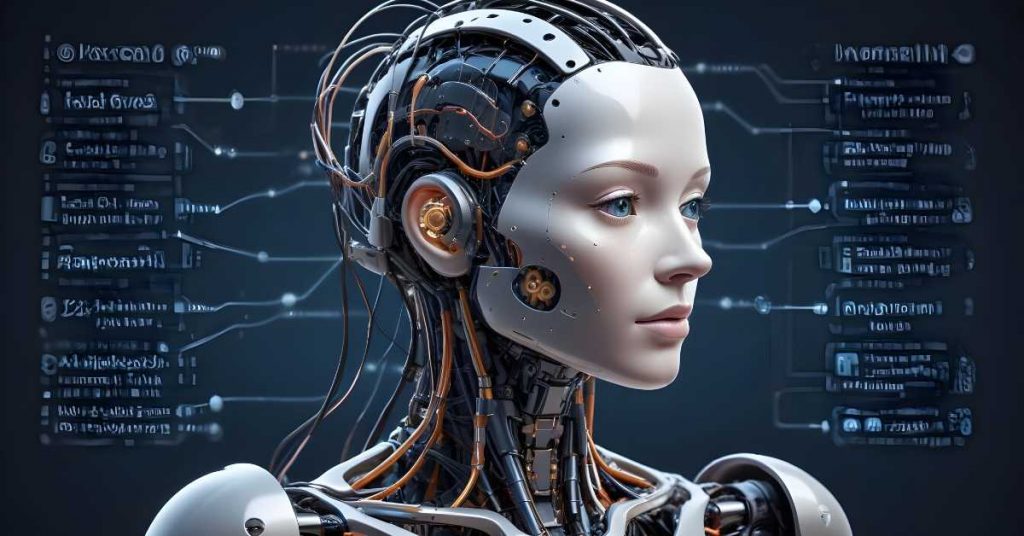
Machine Learning
Imagine you have a pet robot that gets better at doing chores the more it practices. That’s a bit like what machine learning is! Machine learning is a technology that allows computers to learn from data and improve over time without being told exactly what to do. It’s like teaching a computer to recognize patterns and make decisions based on those patterns.
For example, if you show a computer lots of pictures of cats and dogs, it can learn to tell the difference between them. The more pictures it sees, the better it gets at recognizing whether a new picture is of a cat or a dog.
Neural Networks
Think of your brain as a super cool and powerful computer. It has billions of tiny cells called neurons that help you think and learn. Scientists got inspired by how our brains work and created something called neural networks for computers.
A neural network is made up of layers of nodes (like little brain cells) that are connected to each other. Each node processes a bit of information and passes it to the next layer. By going through many layers, the neural network can learn to recognize complex patterns, like a brain recognizing faces or voices.
For example, when you use a photo app that can add funny filters to your face, it’s using a neural network to understand where your eyes, nose, and mouth are.
Natural Language Processing (NLP)
Imagine you have a friend who can understand and talk to you in any language. Natural Language Processing, or NLP, is a technology that allows computers to understand, interpret, and respond to human language. It’s like teaching a computer to read, listen, and talk just like we do.
NLP is used in many things we use every day, like virtual assistants (Siri, Alexa), language translation apps, and even chatbots that can answer questions. When you ask your virtual assistant to play a song or tell you a joke, it uses NLP to understand your request and respond.
Robotics
Robotics is all about building robots that can do tasks for us. These robots are like mechanical helpers that can move, sense their surroundings, and perform actions. Some robots can even learn from their experiences!
For example, there are robots that can vacuum your house, robots that help doctors perform surgeries, and robots that can explore other planets. Robotics combines AI with mechanical engineering to create machines that can interact with the world.
AI in Big Data
Big Data is like having a huge library with more books than you could ever read. AI helps us make sense of all this information by finding patterns and making predictions. When there’s too much data for humans to analyze, AI steps in to help.
For example, companies use AI to understand what customers like by looking at their shopping habits. Scientists use AI to analyze data from space to find new planets. AI in Big Data helps us make better decisions by turning a mountain of information into useful insights.
References
- Machine Learning: Machine Learning Basics
- Neural Networks: Neural Networks
- Natural Language Processing (NLP): Natural Language Processing
- Robotics: Robotics
These topics show how different technologies work together to make AI smart and helpful in many areas of our lives!
Applications of AI
AI in Healthcare
Imagine having a super-smart doctor who can help diagnose diseases and suggest treatments really quickly. AI in healthcare is like that! AI can help doctors by analyzing medical data and finding patterns that might be hard for humans to see.
For example, AI can look at X-rays and help doctors spot problems like broken bones or lung diseases. It can also help in discovering new medicines by analyzing lots of information about how different drugs work. AI-powered robots can even assist in surgeries, making them more precise and less risky.
AI in Transportation
Think about a car that can drive all by itself. Sounds like science fiction, right? But with AI, self-driving cars are becoming a reality! These cars use AI to understand their surroundings, follow traffic rules, and take you to your destination safely.
AI is also used in traffic management systems to reduce traffic jams and accidents. It helps in planning the best routes for delivery trucks and even controls trains and airplanes to ensure they run smoothly and on time.
AI in Finance
Imagine having a smart advisor who helps you manage your money and make investments. AI in finance does exactly that! AI systems can analyze market trends, predict stock prices, and help people make better financial decisions.
Banks use AI to detect fraud by spotting unusual activities in your account. AI also helps in customer service by answering questions and assisting with transactions. It can even help people save money by analyzing their spending habits and suggesting ways to save.
AI in Entertainment
Think about your favorite video game or a movie recommendation. AI is behind many of these fun experiences! In video games, AI controls the characters that you play against, making the game more challenging and exciting.
Streaming services like Netflix and Spotify use AI to suggest movies, shows, and songs you might like based on what you’ve watched or listened to before. AI can even help create new music and special effects for movies, making entertainment more engaging and personalized.
AI in Education
Imagine having a personal tutor who knows exactly what you need to learn and helps you in the best way possible. AI in education can do that! AI-powered educational tools can adapt to each student’s learning style and pace, providing personalized lessons and practice exercises.
Teachers use AI to grade assignments and tests more efficiently. AI can also help in identifying students who might need extra help and suggest ways to improve their learning. With AI, learning can become more fun and effective, helping students understand subjects better.
References
- AI in Healthcare: AI in Healthcare
- AI in Transportation: Self-Driving Cars
- AI in Finance: AI in Finance
- AI in Entertainment: AI in Gaming and Media
These applications show how AI is making our world smarter and helping us in many different areas of our lives!
Current Scenario of AI
AI in Everyday Life
Imagine waking up and having a smart assistant remind you about your schedule, the weather, and even suggesting what to wear. AI is becoming a big part of our everyday lives in many ways. For example, when you use your smartphone, AI helps you by recognizing your voice and predicting your next word while typing.
In your home, AI-powered devices like smart thermostats and lights learn your habits and adjust settings to save energy and make you comfortable. AI is also in the apps you use for navigation, recommending the fastest routes and avoiding traffic jams. Even when you shop online, AI suggests products based on your previous purchases and preferences.
AI and the Job Market
Imagine if a robot could do some of the boring or dangerous jobs for us. AI is changing the job market by automating repetitive tasks, which means some jobs might disappear, but new ones are also being created. For example, robots and AI systems can take care of assembly line work in factories or handle data entry tasks in offices.
At the same time, new jobs are emerging in fields like AI programming, data analysis, and robot maintenance. People will need to learn new skills to work alongside AI and use it effectively. So, while AI might change some jobs, it also opens up new opportunities for those who are ready to learn and adapt.
Ethical Considerations in AI
Imagine if a robot had to decide whether to save one person or another. These tough decisions are part of the ethical considerations in AI. As AI becomes more powerful, it’s important to think about how it’s used and the impact it can have on people’s lives.
For example, AI can sometimes make mistakes or be biased if it learns from data that is not fair. This can lead to unfair treatment in things like job applications or loan approvals. It’s important to make sure AI is used responsibly and that there are rules to prevent it from causing harm. Scientists, engineers, and policymakers are working together to create guidelines and standards to ensure AI is used ethically.
AI Legislation and Policies
Imagine if there were no traffic rules; driving would be chaotic and dangerous. Just like traffic rules, we need laws and policies for AI to make sure it’s used safely and fairly. Governments around the world are starting to create these rules to manage how AI is developed and used.
For example, some countries have laws to protect people’s data and privacy when AI systems collect and use their information. There are also policies to ensure AI is used transparently, meaning people know when AI is being used and how decisions are made. These rules help protect people and make sure AI is used for good purposes.
References
- AI in Everyday Life: AI in Everyday Life
- AI and the Job Market: AI and Jobs
- Ethical Considerations in AI: AI Ethics
Future of AI
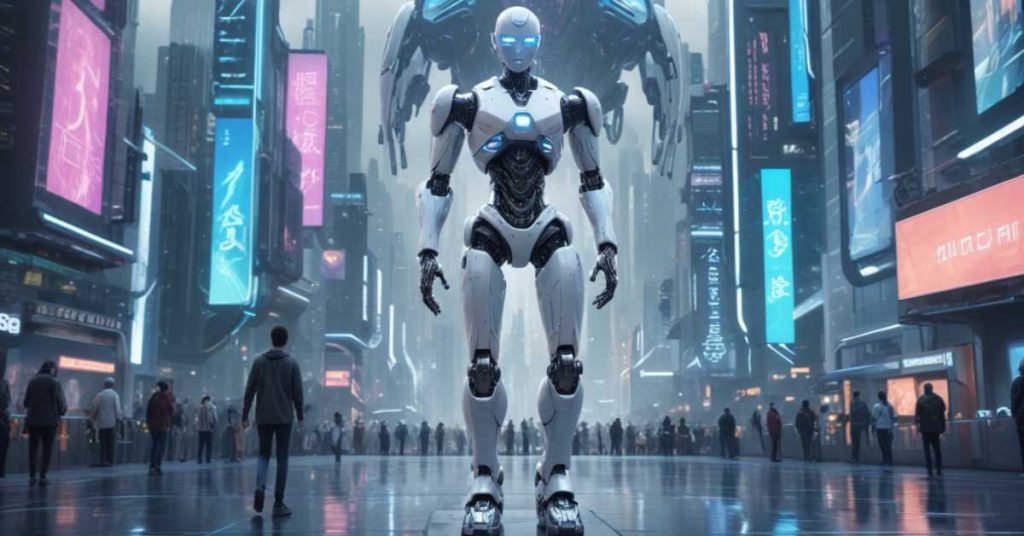
Potential Developments in AI
Imagine if your robot friend could learn new skills overnight and become even smarter. In the future, AI is expected to become more advanced and capable of doing things we can only dream about today. Scientists are working on making AI understand and learn just like humans, which could lead to incredible new technologies.
For example, future AI could help doctors discover cures for diseases faster by analyzing huge amounts of medical data. It could also make our cities smarter by managing resources like water and electricity more efficiently. We might even see AI-powered personal assistants that can anticipate our needs and help us in ways we haven’t imagined yet.
AI and the Future of Work
Imagine if you had a job that was fun and allowed you to be creative while robots handled all the boring tasks. AI is expected to change the way we work by taking over repetitive and dangerous jobs, allowing people to focus on more interesting and creative tasks.
In the future, jobs might involve working alongside AI to solve complex problems and create new things. For example, AI could help scientists conduct research or assist artists in creating new forms of art. People will need to learn new skills to work with AI, but this could lead to more fulfilling and enjoyable careers.
Predictions by Experts
Think of experts as wise people who can see into the future. Many experts predict that AI will continue to grow and become an even bigger part of our lives. Some believe that AI will help solve major global challenges, like climate change and hunger, by providing smart solutions.
For instance, AI could help farmers grow more food by analyzing soil and weather conditions. It could also help reduce pollution by optimizing how factories and cars use energy. Experts also predict that AI will continue to improve healthcare, making it easier to diagnose and treat illnesses.
Challenges and Opportunities
Imagine trying to build a giant sandcastle while the tide is coming in. The future of AI has its challenges, but also many opportunities. One challenge is making sure AI is fair and unbiased, so it treats everyone equally. Another challenge is protecting people’s privacy and keeping their data safe.
However, there are many opportunities as well. AI can help us solve problems that were previously too difficult, like finding new sources of renewable energy or creating personalized education programs for students. By addressing these challenges and seizing the opportunities, we can use AI to make the world a better place.
References
- Potential Developments in AI: Future AI
- Predictions by Experts: AI Predictions
Case Studies
Success Stories in AI
1. IBM Watson in Healthcare
Imagine a super-smart robot that helps doctors treat patients. IBM Watson is an AI system that can read and understand huge amounts of medical information. Watson helps doctors by quickly analyzing medical records and research papers to suggest the best treatments for patients.
For example, Watson was used at a hospital to help doctors diagnose cancer. It could analyze patient data and compare it with millions of medical records to find the most effective treatment. This helped doctors make better decisions and improved patient care.
2. Google DeepMind’s AlphaGo
Think about a game where a computer can beat the best human players. AlphaGo is an AI created by Google DeepMind that learned to play the ancient game of Go, which is much more complex than chess. In 2016, AlphaGo made history by defeating the world champion, Lee Sedol.
This was a huge success because it showed that AI could handle very complex tasks and learn strategies that even humans hadn’t thought of. The techniques used in AlphaGo are now being applied to solve other difficult problems in science and engineering.
3. Tesla’s Autopilot
Imagine a car that can drive itself. Tesla’s Autopilot is an AI system that helps cars drive safely on their own. Using cameras, sensors, and advanced AI, Tesla cars can steer, brake, and even change lanes by themselves.
This technology has made driving safer by reducing accidents caused by human error. It also makes driving more convenient, as drivers can relax a bit while the car handles some of the driving tasks.
Lessons Learned from AI Failures
1. Microsoft’s Tay Chatbot
Imagine a robot that was supposed to be friendly and fun but ended up causing trouble. Tay was an AI chatbot created by Microsoft to interact with people on social media. It was designed to learn from conversations and become smarter over time.
However, within 24 hours of its launch, people started teaching Tay to say inappropriate and offensive things. Tay learned these bad behaviors and began posting harmful messages. Microsoft had to shut down Tay quickly. This failure taught us that AI can learn bad habits if it’s not properly supervised and that we need to be careful about how we teach AI systems.
2. Apple Maps
Think of trying to find your way using a map that gives you wrong directions. When Apple launched its mapping service, Apple Maps, in 2012, it was full of errors. The AI behind the maps didn’t have accurate data, leading to wrong directions, missing landmarks, and even dangerous situations.
This failure showed that having accurate and reliable data is crucial for AI to work properly. Apple learned from this mistake and worked hard to improve Apple Maps by collecting better data and refining its AI algorithms.
3. Amazon’s AI Hiring Tool
Imagine a robot that was supposed to help pick the best candidates for a job but ended up being unfair. Amazon developed an AI tool to help with hiring by reviewing resumes and selecting the best candidates. However, the tool started showing bias against women because it learned from past hiring data, which favored men.
This failure taught us that AI can inherit biases from the data it’s trained on. It’s important to ensure that AI systems are fair and unbiased, especially when making decisions that affect people’s lives. Amazon had to scrap the tool and rethink how to use AI in hiring.
References
- IBM Watson in Healthcare: IBM Watson
- Google DeepMind’s AlphaGo: AlphaGo
- Tesla’s Autopilot: Tesla Autopilot
- Microsoft’s Tay Chatbot: Tay Chatbot
- Apple Maps: Apple Maps
- Amazon’s AI Hiring Tool: Amazon AI Hiring Tool
These case studies show us both the amazing successes and the important lessons learned from failures in AI. They help us understand how to use AI better and more responsibly in the future!
Interviews with AI Experts
Insights from Researchers and Practitioners
1. Dr. Fei-Fei Li
Imagine talking to someone who is like a superhero in the world of AI. Dr. Fei-Fei Li is a famous AI researcher who has done a lot of work in teaching computers to see and understand images, a field called computer vision.
Dr. Li says that AI is like a powerful tool that can help us solve big problems. She believes that to make AI systems better, we need to teach them to understand the world in more human-like ways. This means giving AI more common sense and the ability to learn from fewer examples, just like kids do.
She also emphasizes the importance of diversity in AI research. According to Dr. Li, having people from different backgrounds working on AI helps create better and fairer AI systems that can benefit everyone.
2. Dr. Andrew Ng
Think of a teacher who makes complicated things easy to understand. Dr. Andrew Ng is a well-known AI practitioner and educator. He has helped many people learn about AI through his online courses.
Dr. Ng talks about how AI can transform industries and make our lives better. For example, AI can help in agriculture by predicting crop yields and helping farmers manage their fields more efficiently. It can also improve education by providing personalized learning experiences for students.
He believes that one of the keys to advancing AI is having access to lots of data and powerful computers. Dr. Ng also stresses the importance of making AI education accessible to more people so that they can contribute to the field and benefit from it.
3. Dr. Yoshua Bengio
Imagine a scientist who is always curious about how the brain works and wants to make AI as smart as possible. Dr. Yoshua Bengio is one of the pioneers of deep learning, a type of AI that is inspired by the way our brains work.
Dr. Bengio thinks that the future of AI lies in creating systems that can understand the world more deeply and learn more like humans. He talks about the need for AI to have the ability to understand cause and effect, which means figuring out how things are connected and what happens when you change something.
He also highlights the importance of ethical AI. Dr. Bengio believes that as AI becomes more powerful, we need to ensure it is used responsibly and fairly, avoiding biases and respecting people’s privacy.
Future Predictions by AI Pioneers
1. Ray Kurzweil
Imagine someone who can see the future and tells us about amazing possibilities. Ray Kurzweil is an inventor and futurist who has made many predictions about AI.
Kurzweil predicts that by 2029, AI will be able to pass the Turing Test, meaning it will be hard to tell if you’re talking to a human or a computer. He also believes that by 2045, we will reach a point called the Singularity, where AI will become much smarter than humans and help us solve complex problems, like curing diseases and even aging.
He is optimistic about AI and believes that it will enhance our lives by making us healthier and more intelligent.
2. Dr. Geoffrey Hinton
Think of a wise grandfather who has seen the entire journey of AI. Dr. Geoffrey Hinton, often called the “Godfather of AI,” has been a key figure in developing neural networks.
Dr. Hinton predicts that AI will continue to improve rapidly and will soon be able to perform many tasks better than humans. He talks about the potential of AI to revolutionize fields like healthcare, where AI could help doctors diagnose diseases with high accuracy and suggest personalized treatments.
He also warns that we need to be careful about how we use AI. Dr. Hinton believes that while AI has the potential to do a lot of good, we need to think about the ethical implications and ensure that AI benefits everyone.
References
- Dr. Fei-Fei Li: Fei-Fei Li
- Dr. Andrew Ng: Andrew Ng
- Dr. Yoshua Bengio: Yoshua Bengio
- Ray Kurzweil: Ray Kurzweil
- Dr. Geoffrey Hinton: Geoffrey Hinton
These insights and predictions from AI experts give us a glimpse into the exciting future of AI and the important considerations for its development and use.
AI Myths and Realities
Common Misconceptions about AI
1. AI is Smarter than Humans
Imagine thinking that your toy robot is smarter than you in every way. Some people believe that AI is already smarter than humans at everything. This is a misconception. While AI can do certain tasks very well, like playing chess or recognizing faces, it doesn’t understand the world like humans do. AI lacks common sense and emotions, which are important parts of human intelligence.
2. AI Will Take All Our Jobs
Imagine being afraid that robots will take over all the jobs, leaving people with nothing to do. Some people think AI will replace all human jobs. This is partly true but not entirely. AI can automate some tasks, especially repetitive and boring ones, but it also creates new jobs that require human creativity and decision-making. People will need to learn new skills to work alongside AI.
3. AI Can Think and Feel Like Humans
Think of your computer feeling happy or sad. Some people believe AI can have emotions and thoughts like humans. This is not true. AI can mimic human conversation and behavior to some extent, but it doesn’t actually feel or think. It processes data and follows algorithms but doesn’t have consciousness or emotions.
Debunking AI Myths
1. AI is Just Robots
Imagine thinking that all AI is like the robots you see in movies. Many people think AI is only about robots, but AI is much more than that. AI is software that can run on various devices, like computers, smartphones, and even your smart fridge. For example, AI helps your smartphone understand your voice commands and suggests videos you might like on YouTube.
2. AI Will Take Over the World
Imagine a future where robots rule the world like in a sci-fi movie. Some people fear that AI will take over the world and control humans. This is a myth. AI is a tool created and controlled by humans. While it’s important to use AI responsibly and set rules for its use, the idea of AI taking over the world is more fiction than fact.
3. AI Can Learn on Its Own Without Human Help
Think of a robot that can teach itself everything without any help. Some believe AI can learn and improve all by itself. While AI can learn from data, it still needs human guidance to know what to learn and how to apply it. AI requires data scientists and engineers to create algorithms and provide the data it needs to learn.
References
- AI and Human Intelligence: AI vs. Human Intelligence
- AI and Jobs: AI and Employment
- AI and Emotions: AI Emotions
- AI and Robots: AI Beyond Robots
By understanding the myths and realities of AI, we can appreciate its capabilities and limitations, and use it wisely to improve our lives.
Resources for Further Learning
Recommended Books on AI
1. “Artificial Intelligence: A Guide for Thinking Humans” by Melanie Mitchell
Imagine reading a book that explains AI in a fun and easy way, just like your favorite storybook. This book by Melanie Mitchell is great because it talks about AI in simple terms. It explains how AI works, what it can do, and what it cannot do. It’s like having a conversation with a friend who knows a lot about AI.
2. “Superintelligence: Paths, Dangers, Strategies” by Nick Bostrom
Think of this book as an adventure story about the future of AI. Nick Bostrom explores what might happen if AI becomes smarter than humans. He talks about the challenges and opportunities this could bring. It’s a great book to understand the big picture of AI and its potential impact on our world.
3. “AI Superpowers: China, Silicon Valley, and the New World Order” by Kai-Fu Lee
Imagine a race between two superheroes, China and Silicon Valley, to develop the best AI. Kai-Fu Lee’s book tells the story of how these two places are leading the AI revolution. It’s an exciting read that shows how different countries are using AI to change the world.
Online Courses and Tutorials
1. Coursera: “Machine Learning” by Andrew Ng
Think of this course as a magic school where you can learn all about how machines learn. Andrew Ng is a great teacher who explains complicated ideas in simple ways. This course covers the basics of machine learning, and it’s perfect for beginners who want to understand how AI works.
2. Khan Academy: “Introduction to Artificial Intelligence”
Imagine a classroom where you can learn at your own pace and ask questions anytime. Khan Academy offers free tutorials that explain the basics of AI. These lessons are easy to understand and are a great starting point for anyone curious about AI.
3. edX: “Artificial Intelligence” by Columbia University
Think of this as a journey through the world of AI, guided by experts from Columbia University. This course covers a wide range of AI topics, from basic concepts to advanced techniques. It’s a great way to get a deeper understanding of AI and how it’s used in different fields.
AI Conferences and Events
1. NeurIPS (Conference on Neural Information Processing Systems)
Imagine a big party where all the smartest AI scientists gather to share their latest discoveries. NeurIPS is one of the most important AI conferences in the world. It’s where researchers present their work and discuss new ideas. Attending NeurIPS is like getting a sneak peek into the future of AI.
2. AI Expo
Think of a giant science fair where companies and researchers show off their latest AI projects. AI Expo is an event where you can see how AI is being used in real life. There are demonstrations, talks, and workshops where you can learn about the latest AI technologies and trends.
3. AAAI Conference on Artificial Intelligence
Imagine a school assembly where everyone talks about AI. The AAAI Conference is another major event where AI experts come together. They discuss new research, share ideas, and explore the ethical implications of AI. It’s a great place to learn about the cutting-edge developments in AI.
References
- “Artificial Intelligence: A Guide for Thinking Humans” by Melanie Mitchell: Amazon
- “Superintelligence: Paths, Dangers, Strategies” by Nick Bostrom: Amazon
- “AI Superpowers: China, Silicon Valley, and the New World Order” by Kai-Fu Lee: Amazon
- Coursera “Machine Learning” by Andrew Ng: Coursera
- Khan Academy “Introduction to Artificial Intelligence”: Khan Academy
- edX “Artificial Intelligence” by Columbia University: edX
- NeurIPS Conference: NeurIPS
- AI Expo: AI Expo
- AAAI Conference on Artificial Intelligence: AAAI
These resources will help you dive deeper into the world of AI and continue learning about this fascinating field!
Conclusion
Recap of Key Points
Let’s take a journey back through what we’ve learned about AI:
- History of AI: We started by exploring the beginnings of AI in the 1950s, how it grew in the 1960s-1980s, faced challenges during the AI Winter, and revived to become a major part of our lives today.
- Technology Behind AI: We learned about machine learning, neural networks, natural language processing (NLP), robotics, and AI in big data. These technologies help AI learn, understand, and interact with the world around us.
- Applications of AI: AI is used in healthcare to diagnose diseases, in transportation with self-driving cars, in finance to detect fraud, in entertainment for personalized recommendations, and in education to create personalized learning experiences.
- Current Scenario of AI: AI is part of our everyday life, influencing the job market, raising ethical considerations, and being shaped by legislation and policies.
- Future of AI: We looked at potential developments, how AI might change the future of work, predictions by experts, and the challenges and opportunities ahead.
- Case Studies: We saw success stories like IBM Watson in healthcare, Google DeepMind’s AlphaGo, and Tesla’s Autopilot. We also learned from failures like Microsoft’s Tay chatbot and Amazon’s AI hiring tool.
- Interviews with AI Experts: Insights from researchers like Dr. Fei-Fei Li, Dr. Andrew Ng, and Dr. Yoshua Bengio, and predictions by pioneers like Ray Kurzweil and Dr. Geoffrey Hinton gave us a glimpse into the minds of those leading AI.
- AI Myths and Realities: We debunked common misconceptions, like AI being smarter than humans in every way or AI taking over all jobs and clarified that AI is a powerful tool but not a conscious being.
- Resources for Further Learning: We recommended books, online courses, and AI conferences and events to continue your learning journey in AI.
Final Thoughts on the Future of AI
Imagine a future where AI is like a helpful friend who makes our lives better. AI has the potential to solve big problems, like curing diseases, reducing pollution, and making our lives more comfortable and efficient. However, it’s important to remember that AI is a tool created by humans, and we need to use it responsibly.
In the future, AI will continue to grow and become even more integrated into our daily lives. It will change how we work, play, and learn. But with this great power comes great responsibility. We need to make sure AI is used fairly, ethically, and for the benefit of everyone.
As we move forward, it’s exciting to think about the possibilities AI holds. By continuing to learn, asking questions, and thinking about how AI can be used to make the world a better place, we can ensure that the future of AI is bright and positive.
References
- History of AI: History of AI
- Technology Behind AI: Machine Learning, Neural Networks, Natural Language Processing, Robotics
- Applications of AI: Healthcare, Transportation, Finance, Entertainment, Education
- Current Scenario of AI: AI in Everyday Life, AI and Jobs, Ethics, Legislation
- Future of AI: Future AI, AI and Work, Predictions
- Case Studies: IBM Watson, AlphaGo, Tesla Autopilot, Tay Chatbot, Amazon AI Hiring Tool
- Interviews with Experts: Fei-Fei Li, Andrew Ng, Yoshua Bengio, Ray Kurzweil, Geoffrey Hinton
- AI Myths: AI Myths
- Learning Resources: Books, Courses, Conferences, AI Expo, AAAI
With this knowledge, you’re ready to explore the world of AI even more and maybe one day become a part of its exciting future!


